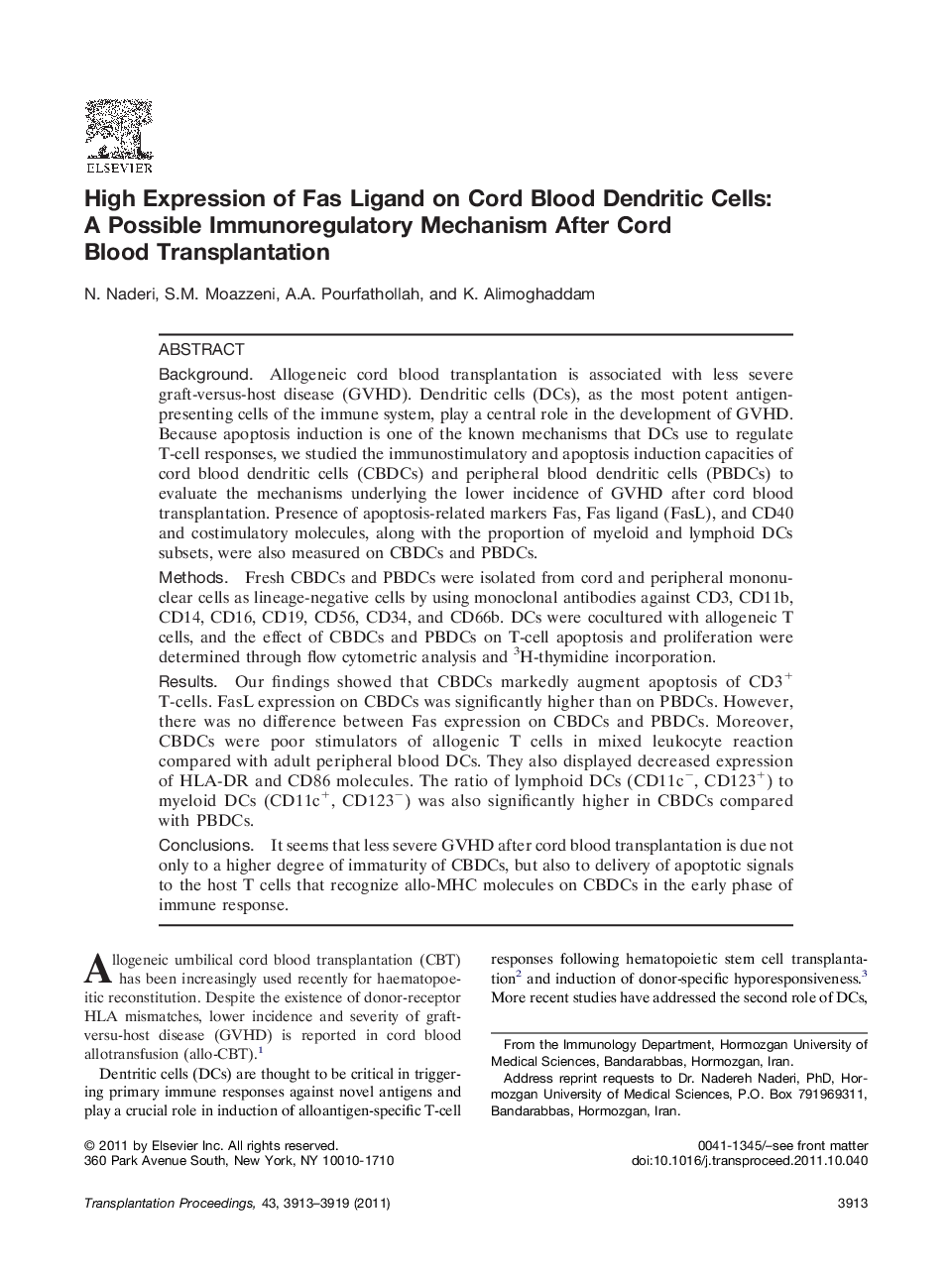| Article ID | Journal | Published Year | Pages | File Type |
|---|---|---|---|---|
| 6249037 | Transplantation Proceedings | 2011 | 7 Pages |
BackgroundAllogeneic cord blood transplantation is associated with less severe graft-versus-host disease (GVHD). Dendritic cells (DCs), as the most potent antigen-presenting cells of the immune system, play a central role in the development of GVHD. Because apoptosis induction is one of the known mechanisms that DCs use to regulate T-cell responses, we studied the immunostimulatory and apoptosis induction capacities of cord blood dendritic cells (CBDCs) and peripheral blood dendritic cells (PBDCs) to evaluate the mechanisms underlying the lower incidence of GVHD after cord blood transplantation. Presence of apoptosis-related markers Fas, Fas ligand (FasL), and CD40 and costimulatory molecules, along with the proportion of myeloid and lymphoid DCs subsets, were also measured on CBDCs and PBDCs.MethodsFresh CBDCs and PBDCs were isolated from cord and peripheral mononuclear cells as lineage-negative cells by using monoclonal antibodies against CD3, CD11b, CD14, CD16, CD19, CD56, CD34, and CD66b. DCs were cocultured with allogeneic T cells, and the effect of CBDCs and PBDCs on T-cell apoptosis and proliferation were determined through flow cytometric analysis and 3H-thymidine incorporation.ResultsOur findings showed that CBDCs markedly augment apoptosis of CD3+ T-cells. FasL expression on CBDCs was significantly higher than on PBDCs. However, there was no difference between Fas expression on CBDCs and PBDCs. Moreover, CBDCs were poor stimulators of allogenic T cells in mixed leukocyte reaction compared with adult peripheral blood DCs. They also displayed decreased expression of HLA-DR and CD86 molecules. The ratio of lymphoid DCs (CD11câ, CD123+) to myeloid DCs (CD11c+, CD123â) was also significantly higher in CBDCs compared with PBDCs.ConclusionsIt seems that less severe GVHD after cord blood transplantation is due not only to a higher degree of immaturity of CBDCs, but also to delivery of apoptotic signals to the host T cells that recognize allo-MHC molecules on CBDCs in the early phase of immune response.
